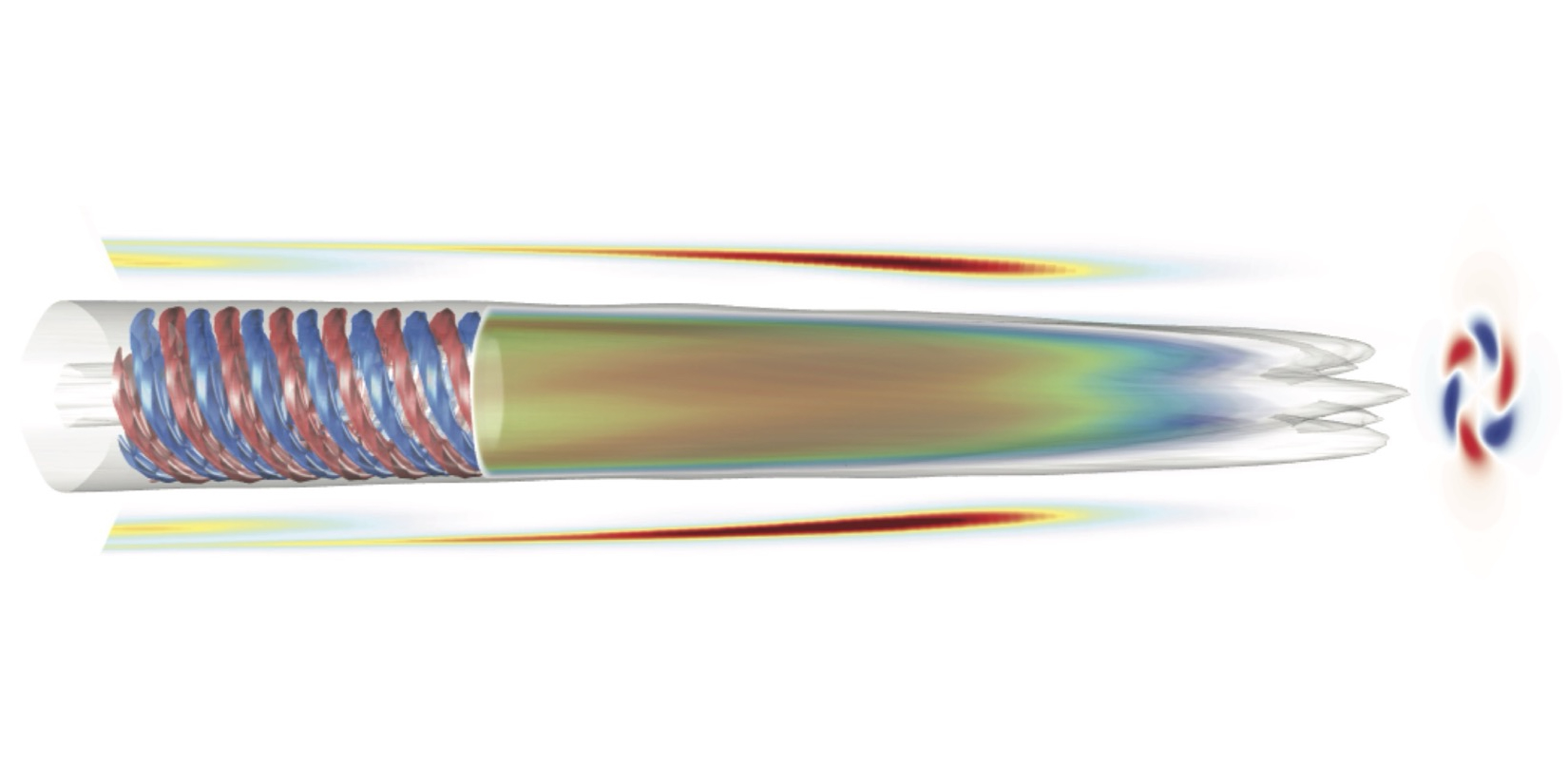Research
Here, you will find the key questions, concepts, and methodologies that drive our research. Please contact us if you want to know more about any of our work and research interests.
Science questions
-
Can relativistic plasma waves be harnessed to generate high-quality, RF accelerator-class relativistic electron bunches?
-
Can laser-plasma accelerators produce X-ray pulses with FEL-class brightness while maintaining spatial and temporal coherence?
-
Can we manipulate the spatiotemporal properties of electromagnetic waves through laser-plasma and beam-plasma interactions to create novel light pulses?
We combine plasma theory and simulations to address these questions. More details below.
High Performance Computing
We develop new high-performance computing tools to enhance particle-in-cell simulations.
-
Radiation Diagnostic for Osiris (RaDiO) RaDiO calculates the spatiotemporal profile of charged particles during PIC simulations, using either a spherical or Cartesian virtual detector. It incorporates built-in spatial and temporal coherence effects for accurate analysis. Its companion tool, RaDi-X, is a standalone application that performs calculations using pre-computed particle trajectories. The link for the paper is here.
-
Arbitrary and Exact Electromagnetic Wave-Packet Injector for FDTD Developed by our team member Rafael Almeida, this tool computes the exact electromagnetic field structure of any vector or scalar wave-packet, extending beyond the paraxial and envelope approximations in both 3D and Quasi-3D geometries. It is particularly suited for injecting white-light pulses and accurately modeling field structures in regimes where analytical solutions are unavailable, such as single-cycle and tightly focused pulses. More details coming soon.
Our main computing tool is Osiris, a relativistic, massively parallel particle-in-cell (PIC) code. More information here.
Structured light
We explore the interface between optics and plasma by investigating the use of structured light in laser-plasma interactions. Structured light enable generation of strong magnetic fields in plasmas and enhance laser-plasma accelerators and light sources.
-
Light’s Orbital Angular Momentum - OAM Electromagnetic waves with orbital angular momentum (OAM) exhibit spiral wavefronts and feature an on-axis intensity null. These pulses are solutions to the wave equation in cylindrical geometry and are commonly described by Laguerre-Gaussian modes. The superposition of three or more non-colinear plane waves can lead to the phase singularities that characterise orbital angular momentum. While circularly polarized waves carry spin angular momentum (SAM), OAM pulses transport orbital angular momentum, enabling new ways to control laser-plasma interactions.
-
Electromagnetic wave-packets with controllable intensity-peak trajectories The interference pattern of suitably chosen plane-waves can lead to mind-boggling effects, which include pulses that appear to accelerate in vacuum, wave-packets that appear to follow along curves, and pulses with arbitrary focal-plane velocities, including superluminal. These pulses promise to break fundamental limits of laser-plasma accelerators, for example.
Advanced plasma concepts
-
Plasma-based accelerators In plasma acceleration, relativistic plasma waves are used to accelerate charged particles to high energies. Unlike conventional accelerators, which are limited by material breakdown, plasma—formed through ionization—can sustain electric fields several orders of magnitude stronger than those in solid-state materials. This enables high-gradient acceleration in extremely compact setups. Notably, experiments have demonstrated the acceleration of a 10 GeV electron beam within a mere 20 cm plasma channel, showcasing the remarkable potential of plasma-based accelerators.
-
Advanced light sources Conventional light sources rely on relativistic electrons, generated by RF accelerators, which are directed through magnetic undulators to produce radiation. In contrast, our team explores novel light sources where plasmas and lasers serve both as the accelerating medium and the mechanism for inducing the high accelerations required for radiation emission. Key examples include Nonlinear Thomson scattering, high-harmonic generation, and betatron radiation from relativistic electrons in plasma accelerators, all of which leverage laser and beam-plasma interactions to produce intense radiation bursts.
